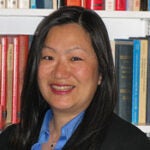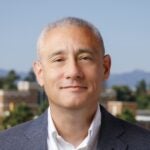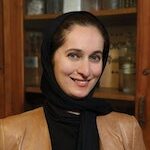Someone has to remember to replace the dish soap and select which vegetables to chop — and that takes a toll, USC Dornsife’s Darby Saxbe and Lizzie Aviv report.
Tag: Health Care
Keck Hospital of USC earns five stars in quality star rating report for second year in a row
The Centers for Medicare & Medicaid Services rating places the USC hospital among an elite group in the nation.
Trojan couple gift renowned eye care practice to USC
Richard and Cathy Weise’s Glendale Eye Medical Group will join the USC Roski Eye Institute, expanding patient care opportunities in Southern California.
USC experts can discuss newly approved Alzheimer’s drug and related dementia research
Source Alert
USC experts can discuss newly approved Alzheimer’s drug and related dementia research
The US Food and Drug Administration on Tuesday approved a new drug designed to slow the progression of early symptomatic Alzheimer’s disease. The drug, donanemab, was shown in studies to modestly slow cognitive decline in initial stages of the disease but it also carries safety risks. USC experts can speak about the potential impact of amyloid-clearing medications.
Contact: Leigh Hopper at lhopper@usc.edu or uscnews@usc.edu
Helena Chui can discuss potentially serious side effects of new Alzheimer’s drugs which include brain swelling and bleeding.
Paul Aisen can discuss amyloid-clearing drugs for Alzheimer’s disease. Aisen is the founding director of the Alzheimer’s Therapeutic Research Institute of USC (ATRI).
Lon Schneider is an expert on psychiatry, dementia prevention, intervention and care.
Elizabeth Joe sees Alzheimer’s patients in the clinic and can speak about diagnosing the disease and issues facing families.
Julie Zissimopoulos focuses on the economic costs of dementia, the impact of dementia on care partners, and racial and ethnic disparities in diagnosis and health care treatment for dementia.
María Aranda can discuss the burden of dementia in Black and Latino populations and how to diversify clinical trials. Aranda is the director of outreach, recruitment and engagement at the Alzheimer’s Disease Research Center at USC.
Donna Benton can discuss the challenges faced by caregivers, including the aging parents of people with Down syndrome, who are susceptible to developing Alzheimer’s in middle age.
Hussein Yassine specializes in how changes in lipid metabolism and nutrition affect cognition and the risk of developing Alzheimer’s disease. He directs a new center for patients who carry the APOE4 allele, the strongest genetic risk factor for dementia.
Additional USC experts
The economics of aging
Dana Goldman can discuss health policies that impact patients with dementia and their caregivers.
Soeren Mattke studies the economic, political and societal implications of Alzheimer’s treatment.
Arie Kapteyn’s recent work is in the field of aging and economic decision making, with papers on topics related to retirement, consumption and savings, disability and economic well-being of the elderly.
Alzheimer’s origins
Andrew Petkus, Caleb Finch and Jiu-Chiuan (JC) Chen explore the link between fine-particle pollution and Alzheimer’s disease.
Andrei Irimia is a biogerontologist and computational neurobiologist studying the effects of genetic, epigenetic, and environmental factors on brain aging. He’s looked at Indigenous populations in the Bolivian Amazon to understand healthy brain aging.
Margaret Gatz researches age-related change in depressive symptoms, personality, and cognition; and risk and protective factors for Alzheimer’s disease and other dementias.
John Ringman is an expert on the Jaliso gene, which predisposes people to developing Alzheimer’s in their 40s.
Michael Rafii can discuss the link between Down syndrome and Alzheimer’s.
Zhen Zhao researches the genetic causes of vascular cognitive impairment and dementia.
Sean Curran is an expert in the biological mechanisms of aging, nutrition and stress adaptation.
Eileen Crimmins has led decades of research focused on how health changes over the life cycle, as well as differences in chronological and biological age.
Brain imaging, mapping, data
Art Toga is an expert in brain mapping. He is a Provost Professor of Ophthalmology, Neurology, Psychiatry, and the Behavioral Sciences, Radiology, Engineering and Biological Sciences at the Keck School of Medicine of USC.
Neda Jahanshad researches genetic influences on brain structure using high-resolution structural and diffusion imaging. Her work with diffusion imaging involves monitoring the effects of infectious diseases, such as HIV, on the brain.
Paul Thompson is principal investigator and co-founder of a consortium which has cooperatively analyzed data from over 45 countries to publish the largest worldwide neuroimaging studies of over 15 brain diseases and conditions, including Parkinson’s disease, epilepsy, ataxia and brain injury, PTSD, substance use disorder, bipolar disorder, major depression, and neurodevelopmental conditions including OCD, ADHD, and ASD.
# # #
Post Dobbs, some states saw deep declines in prescriptions for birth control and emergency contraceptive pills

News Releases
Post Dobbs, some states saw deep declines in prescriptions for birth control and emergency contraceptive pills

Contact: Leigh Hopper at lhopper@usc.edu
Women residing in states with the most restrictive abortion policies after the Supreme Court’s reversal of Roe v Wade also experienced declines in the use of birth control pills and emergency contraceptives, according to a new USC study evaluating the impact of the decision.
The findings, which appear today in JAMA Network Open, suggest that the Dobbs v. Jackson Women’s Health Organization case has had even wider ramifications for women’s reproductive health than previously thought.
The analysis found that states that became that most restrictive after Dobbs, implementing a full ban on abortion, saw significant declines in the number of prescriptions filled for birth control pills and emergency contraceptives at retail pharmacies. These reductions weren’t observed in restrictive states whose policies were unchanged after the Dobbs decision.
Many family planning clinics with abortion services closed immediately after the Roe reversal—particularly in the most restrictive states, said lead author Dima M. Qato, the Hygeia Centennial Chair and associate professor at the USC Alfred E. Mann School of Pharmacy and Pharmaceutical Sciences of USC.
“Because 11% of women rely on such clinics for the provision of prescriptions for contraceptives – many of which are filled at outside pharmacies – these closures may have reduced access to oral and emergency contraceptives,” Qato said.
What’s more, the Supreme Court decision may also have contributed to declines in the use of emergency contraceptives due to misunderstandings about their legality. A January 2023 survey by the Kaiser Family Foundation found that half of women in full-ban states believed Plan B was illegal in their state.
This is the first national study to evaluate the impact of the court’s June 24, 2022, Dobbs decision on prescription fills for oral and emergency contraceptives in the United States.
Efforts needed to protect access
Qato led a team which examined changes in the use of prescription birth control pills and emergency contraceptives before and after the Dobbs decision. During the time period analyzed, March 2021 and October 2023, 142.8 million prescriptions for oral contraceptive pills and 904,269 prescriptions for emergency contraceptives were dispensed at U.S. retail pharmacies.
Before Roe’s reversal, trends in monthly prescription rates for oral and emergency contraception were similar between the most restrictive and least restrictive states. Then, while the case was being reviewed, more highly restrictive states saw a spike in emergency contraceptive prescriptions.
After the decision, however, the researchers found that states becoming the most restrictive experienced a 24% total decline in oral contraceptive prescriptions filled. Fills for emergency contraceptives declined by 65% in the most restrictive states compared to less restrictive ones.
“In states such as Texas and Mississippi where women now don’t even have the option to have an abortion, their access to contraception is also becoming more difficult,” said Qato. “More efforts to improve and protect access to oral contraceptives are needed, especially for emergency contraceptives in states where abortion is no longer an option.”
Researchers noted that emergency contraceptive fills post-Dobbs increased the most in Idaho, which, among states with the most restrictive abortion policies, is the only one that allows pharmacists to prescribe emergency contraceptives to women without any age restrictions.
“We saw the greatest declines in birth control pills and emergency contraceptives in states that had closed a larger share of their family planning clinics. In Texas, for example, birth control pill prescriptions declined by 28% and emergency contraceptive fills declined by 48%,” said Rebecca Myerson, a Schaeffer Fellow and assistant professor at UW Madison who worked on the study.
About this study
Data for the study came from three sources: IQVIA National Prescription Audit PayerTrak, to estimate the monthly volume of prescriptions dispensed at pharmacies at the national and state level; the 2021 American Community Survey, to determine the total population of women and girls of reproductive age; and the Guttmacher Institute, to classify each state in terms of changes in policies related to abortion restrictions between June 2022 and October 2023.
In addition to Qato and Myerson, other authors include co-author G. Caleb Alexander, professor of epidemiology and medicine at the Johns Hopkins Bloomberg School of Public Health; UC Berkeley assistant professor Jenny S. Guadamuz, a former postdoctoral research fellow at the Schaeffer Center; and USC Mann research affiliate Andrew Shoostari.
Qato directs USC Mann’s Program on Medicines and Public Health and is a senior fellow at the USC Schaeffer Center for Health Policy & Economics. The Schaeffer Center is a partnership between USC Mann and the USC Sol Price School of Public Policy.
‘More efforts to improve and protect access
to oral contraceptives are needed, especially for
emergency contraceptives in states where
abortion is no longer an option.’
— Dima Qato, USC Mann
# # #
Dobbs, 2 years later: Abortion and the 2024 election

Source Alert
Dobbs, 2 years later: Abortion and the 2024 election
June 24 marks two years since the U.S. Supreme Court’s decision in Dobbs v. Jackson Women’s Health Organization, which overturned Roe v. Wade and effectively ended federal protections for the right to abortion.
USC experts are available to discuss how the landmark ruling has significantly changed reproductive rights and access across the country, and how these critical issues might shape voter behavior and decisions in the upcoming presidential election.
Contact: Nina Raffio, raffio@usc.edu or (213) 442-8464; USC Media Relations, uscnews@usc.edu or (213) 740-2215
Supreme Court blocks abortion pill ban, but experts warn legal battles are ‘far from over’
 Last week, the U.S. Supreme Court unanimously rejected an effort to limit access to the abortion pill mifepristone.
Last week, the U.S. Supreme Court unanimously rejected an effort to limit access to the abortion pill mifepristone.
“The Supreme Court gave women’s bodies a momentary reprieve from further regulation by the government by dismissing the mifepristone case on the ground that the activist doctors lacked standing. What the public needs to understand is that this is a procedural ruling and not a proclamation that the distribution of mifepristone is lawful or that birth control is protected by the Constitution,” said Aya Gruber, an expert in criminal law and procedure, violence against women and feminist legal theory.
“Plaintiffs with standing may lodge the same challenge that the FDA lacked authority to approve mifepristone. Additionally, pro-life groups are dusting off an 1800s obscenity law, the ‘Comstock Act,’ to argue for a national ban on abortion and ‘abortifacient’ drugs, equipment, and even information. This fight is far from over.”
Gruber is the Harold Medill Heimbaugh professor of law at the USC Gould School of Law.
Contact: agruber@law.usc.edu
How most Americans feel about reproductive rights
 “Contrary to common speculation, American women are not the only ones in favor of policies protecting a right to choice, and there is little variation between the sexes in terms of support for abortion rights,” said Jane Junn, an expert on public opinion, political behavior, and polling methods and analysis.
“Contrary to common speculation, American women are not the only ones in favor of policies protecting a right to choice, and there is little variation between the sexes in terms of support for abortion rights,” said Jane Junn, an expert on public opinion, political behavior, and polling methods and analysis.
“Indeed, a majority of Americans of all sexes support reproductive freedom, and the most substantial variation is by partisanship, with Republican-affiliated voters more supportive of abortion restriction. Nevertheless, even states with strong Republican majorities such as Kansas have supported policies to protect abortion rights following Dobbs. Having lost the right to choice at the federal level is a rallying point for Democratic Party voters, and will likely enhance turnout among these Americans in 2024.”
Junn is the USC Associates Chair in social sciences and professor of political science and gender and sexuality studies at the USC Dornsife College of Letters, Arts and Sciences.
Contact: junn@usc.edu
State ballot initiatives give voters a say on abortion post-Dobbs
 In November, residents in Colorado, Maryland, South Dakota, and Florida will vote on abortion access initiatives, with six other states also advancing similar measures.
In November, residents in Colorado, Maryland, South Dakota, and Florida will vote on abortion access initiatives, with six other states also advancing similar measures.
“Using referendums has some advantages over the more traditional legislative path. Most important, it allows citizens to overrule their elected representatives if they dislike the state’s policy choice,” wrote John Matsusaka, an expert on direct democracy and a professor of business, law and political science at USC in his 2022 op-ed in POLITICO, “Let the People Decide on Abortion.”
“Opinion surveys on abortion tell us that most Americans favor a compromise policy somewhere in between what the activists on both sides want — legal abortion in the early stages of pregnancy, with increasing prohibitions as the fetus becomes viable,” said Matsusaka, executive director of the Initiative and Referendum Institute at USC, which studies and tracks ballot measures and propositions throughout the country.
“If legislators take abortion policy in an extreme direction, a real risk in this age of hyper-polarized parties, initiatives and referendums let voters steer policy back toward the center.”
Contact: matsusak@marshall.usc.edu
Preserving access to emergency contraception
 “The Dobbs decision has not only impacted access to abortion care, forcing many women in restrictive states to travel out-of-state or self-manage an abortion, but has also threatened access to contraception, which is critical to the prevention of pregnancy in states where legal abortion is no longer an option,” said Dima Qato, an expert in health policy, pharmacoepidemiology, drug safety and health disparities.
“The Dobbs decision has not only impacted access to abortion care, forcing many women in restrictive states to travel out-of-state or self-manage an abortion, but has also threatened access to contraception, which is critical to the prevention of pregnancy in states where legal abortion is no longer an option,” said Dima Qato, an expert in health policy, pharmacoepidemiology, drug safety and health disparities.
“Efforts to expand and protect access to emergency contraceptives—the only option safe and effective option to prevent a pregnancy after contraceptive failure, unprotected sexual intercourse or rape– should be a priority for many federal and state policy and public health officials in the post-Dobbs U.S.”
Qato is the Hygeia Centennial Chair and associate professor at the USC Alfred E. Mann School of Pharmacy and Pharmaceutical Sciences and a senior fellow at the USC Leonard D. Schaeffer Center for Health Policy and Economics.
Contact: qato@usc.edu
Additional Experts
Annalisa Enrile is an expert on gender equity, human rights, gender-based violence, and global social justice. Enrile is a teaching professor of social work at the USC Suzanne Dworak-Peck School of Social Work. Enrile has previously provided insights into how restrictive abortion policies disproportionately affect vulnerable populations of women, including victims of sex trafficking and domestic violence.
Contact: enrile@usc.edu
###
Christian Grose is an expert in American government, political institutions, and the politics of the policymaking process. Grose is an associate professor at the USC Dornsife College of Letters, Arts and Sciences and academic director of the USC Schwarzenegger Institute for State and Global Policy.
Contact: cgrose@usc.edu
###
Sofia Gruskin is director of the USC Institute on Inequalities in Global Health with joint appointments at the Keck School of Medicine of USC, USC Gould School of Law, and USC Dornsife Spatial Sciences Institute.
Contact: gruskin@usc.edu
###
Brian Nguyen is an associate professor of clinical obstetrics and gynecology at the Keck School of Medicine of USC. Nguyen’s research focuses on men’s access to emergency contraception, disparities in the use of vasectomy, and men’s experiences of unintended pregnancy and abortion.
Contact: nguyenbt@usc.edu
###
Mindy Romero is a research assistant professor and the founder and director of the Center for Inclusive Democracy at the USC Price School of Public Policy. She is an expert in political sociology, political behavior, voting rights and civic engagement.
Contact: msromero@usc.edu
###
(Photo/iStock)
Mothers pay more out of pocket when pregnancy crosses two calendar years
The USC Schaeffer Center study suggests that women with high-deductible health plans pay more out-of-pocket for maternity care when pregnancies span two calendar years, facing annual deductibles twice.
Don’t fear that needle: Research paves way for flexible ‘soft’ microneedles
Hangbo Zhao presents findings on highly stretchable and customizable microneedles for application in fields including neuroscience, tissue engineering, and wearable bioelectronics
USC researcher discovers drug that may delay onset of Alzheimer’s and Parkinson’s disease and treat hydrocephalus
Young-Kwon Hong and his team have developed a drug that can help clear fluid and cellular debris from the brain.
Does music unlock memory?
“Listening to nostalgic music not only elicits the traditional memory networks of the brain, but it also involves the reward, narrative and self-processing systems of the brain,” says USC researcher Assal Habibi, who directs the USC Dornsife Center for Music, Brain and Society. (Illustrations/Livia Falcaru) 
Health
Does music unlock memory?
USC faculty are getting closer to understanding what happens in your brain when you hear a familiar song — which could affect those struggling with dementia and Alzheimer’s disease.
Go put on one of your all-time favorite songs, one that you’ve been listening to your whole life. What thoughts go through your head? Memories of home? The first time you saw the love of your life?
Nostalgic music — music that we tie strongly to a point in our lives — can evoke deep emotions across the age span. The root of this phenomenon has remained a mystery, but studies have shown that music can generate strong emotional responses — both to calm and invigorate.
A team of USC scientists is getting closer to understanding what happens in your brain when you hear a favorite song — and the results might have profound effects on those struggling with dementia and Alzheimer’s disease.
“Listening to nostalgic music not only elicits the traditional memory networks of the brain, but it also involves the reward, narrative and self-processing systems of the brain,” says USC researcher Assal Habibi, who directs the USC Dornsife Center for Music, Brain and Society. “These are the mechanisms in the brain by which we think you can listen to 10 seconds of nostalgic music, and it can take you back to something vivid, like your high school prom. We could then use that music as a way of really helping individuals with Alzheimer’s disease and other dementias.”
Music, movement and learning
Understanding how music affects cognition and the brain as an organ are the twin interests underlying Habibi’s work. An associate research professor of psychology at the USC Dornsife College of Letters, Arts and Sciences, Habibi uses various tools, including neuroimaging and psychometric testing, to measure what environmental factors such as music do to our brains.
As founder of the center, Habibi sought to bring together experts from USC Dornsife, the Keck School of Medicine of USC, the USC Thornton School of Music and the USC Viterbi School of Engineering to study music and the impact it has on our emotions, movement and learning. Founded in 2023, the center is currently pursuing three lines of research.
One project explores how learning how to play a musical instrument helps foster better cognitive and language skills in the developing child’s brain. The research, done in partnership with the Los Angeles Philharmonic’s youth orchestra program and Heart of Los Angeles and funded by the L.A. Philharmonic and GROW at Annenberg Foundation, has also led to new insights into the connection between music and emotional regulation.
But it’s the project on triggering emotions that gets at the heart of why music resonates with us so strongly.
“Our hope is that by understanding how music evokes nostalgia and autobiographical memory in healthy younger and older adults, we’ll be able to apply these findings to older adults with neurodegenerative diseases like Alzheimer’s disease and other related dementias,” Habibi says.
By understanding how music evokes nostalgia and autobiographical memory in healthy younger and older adults, we’ll be able to apply these findings to older adults with neurodegenerative diseases.
— Assal Habibi
Unveiling lost memories
To investigate how nostalgic music could assist people in recalling memories, Habibi and doctoral candidate Sarah Hennessy tapped experts in machine learning, MRI and psychology to pinpoint what happens in the brain when music unveils a lost memory. To grade how well a participant could recall a memory, the researchers assigned a value to its “vividness,” Habibi says. She describes it as a formula psychologists use to measure how “detailed your perception and sensation of experience are in your description.”
“Vividness measures the amount of detail that goes into your description of a memory,” Habibi says. “If I just ramble on like, ‘I went to the grocery, then did this and that,’ that’s not really remembering your memory, but just the state of it. But if you have details like remembering that the room was dark, that is a more vivid memory.”
The idea has borne two parallel studies from Habibi and Hennessy.
The first had two groups of people, 30 younger and 30 older, who gave the researchers a playlist of songs that evoked powerful memories and emotions. The researchers then used an algorithm developed by Hennessy and colleagues at Viterbi School of engineering to find songs very similar to the ones on the self-selected playlist to serve as a control.
The participants then entered an MRI scanner to scan their brains as they listened to the nostalgic songs, the control songs, and then completely unfamiliar music. Afterward, the participants were asked to describe memories tied to the nostalgic music and the researchers assigned a vividness score. Hennessy says the neuroimaging results were “amazing.”
“When you hear nostalgic music, there’s activity all over your brain, but most notably in the default mode network, which is normally active when we’re daydreaming,” she says. “It is also active when we’re thinking about our own narrative. We also have activity in some visual areas that normally process what you see in front of you. But all these participants had their eyes closed. So, what might be happening is that participants are is visualizing what was in front of them during the memory the song evoked.”
Enhancing quality of life

In the second study, a separate group of 150 people of color — were played different types of music over 12 weeks. Some weeks, they heard nostalgic music. Other weeks, they listened to familiar music that was not nostalgic. The participants were then asked to describe an autobiographical memory tied to the song or music. Again, the researchers assigned a vividness score to the participants’ responses.
The study’s results, which will form the basis of an upcoming paper, will help reveal whether nostalgic music evokes a more vivid memory. Habibi says understanding why music provokes a response in reward and narrative systems of the brain could be used “as a way of therapeutic interventions for individuals with dementia.”
“This specific pattern of encoding and retrieval of nostalgic music seems to be unique, and the ability of the music to retrieve autobiographical memories is personalized and relative to your story and narrative,” Habibi says. “If nostalgic music can help dementia patients access some memories that are typically not accessible to them, it can enhance the quality of life, even if it’s temporary.
“If a patient is with their children, and they can remember a birthday party associated with a song and details of it, it can bring back the richness and emotional connection of that memory,” she adds.
Nostalgic music allows us to connect to our sense of self.
— Sarah Hennessy
Connecting to a sense of self
Habibi and Hennessy continue to investigate the mind-music connection. Habibi, with researchers from USC Thornton and the Alzheimer Disease Research Center, recently received a National Endowment for the Arts Research Lab grant to investigate the “effects of music engagement on hearing, communication, and psychosocial well-being in individuals with, or at risk for, Alzheimer’s disease, as well as their caregivers.”
Hennessy is scheduled to earn her doctoral degree this May, and presented findings from the MRI study at the NeuroMusic Conference held at McMaster University in Canada in November 2023. The analysis for the study investigating dementia in people of color continues and will be submitted for peer-reviewed publication in the coming months.
Currently, Habibi, Hennessy and doctoral candidate Ellen Herschel are conducting a clinical trial for a music intervention app for individuals experiencing dementia. Habibi says that for many dementia patients, the struggle of not remembering causes a lot of agitation. The app will play music for them that’s not necessarily nostalgic but will help support their emotional regulation when they struggle with not recalling a memory.
Hennessy says the researchers hope that understanding how music evokes nostalgia and autobiographical memory in healthy young and older adults will allow future research to investigate how these findings could be applied to older adults with neurodegenerative diseases. “Investigating the mechanism of how music evokes these powerful emotions and memories in the brain can help us understand how music-evoked memories remain relatively spared in Alzheimer’s disease and related dementias,” Hennessy says.
“Nostalgic music allows us to connect to our sense of self,” she adds. “Because this sense of self is often diminished with neurodegenerative disease, the hope is that this type of tailored music intervention might be able to help patients — even if just for the duration of the song — experience a temporary ‘return to self’ by engaging in these self-referential and autobiographical areas in the brain activated by music.”